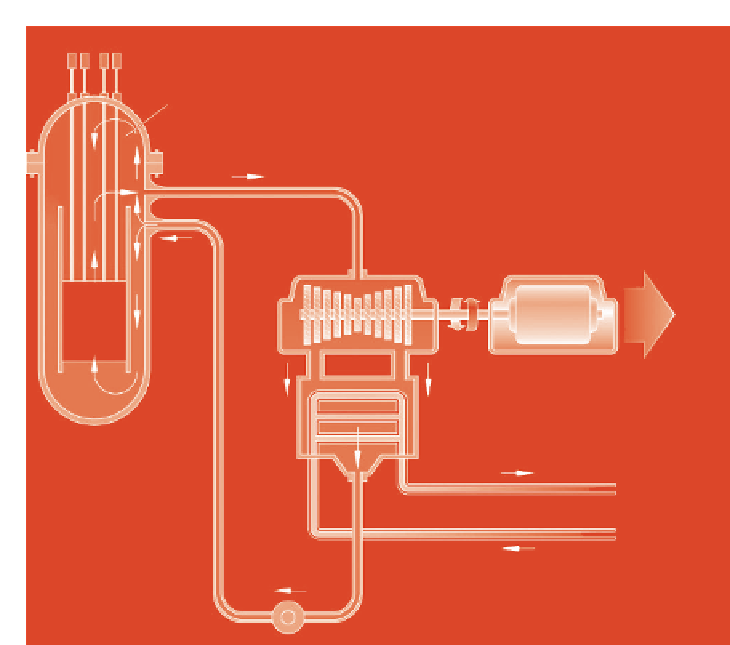Environmental Engineering Reference
In-Depth Information
Control rods
Diagram of a
supercritical water-
cooled reactor
Supercritical water
Electrical
power
Turbine
Generator
Reactor
core
Condenser
Reactor
Heat sink
Pump
there is even more energy to be released by combining or fusing certain
atomic nuclei (of hydrogen) into a bigger nucleus.
What's more, nuclear fusion carries neither of the two main risks posed
by fission. First, while the radioactivity of split atoms is long-lived after
nuclear fission, in the fusion process it is limited to tritium, a radioactive
form of hydrogen which decays quite quickly to become innocuous.
Second, the fusion process is far less likely to spin out of control. The fis-
sion process leads to particles of a split atom splitting other atoms in a chain
reaction that has to be carefully controlled in a power reactor - otherwise
you got an uncontrolled reaction, otherwise known as a nuclear bomb. So
far as we know, there is relatively little danger of this happening with fusion.
The fusion process uses tiny amounts of nuclear fuel. Moreover, there is lit-
tle chance of a runaway reaction, mainly because the fusion reaction is so
fantastically difficult to achieve and maintain in the first place.































































